Typical values at TA = +25°C, ADC
Sampling Rate = 2949.12GHz. Default conditions: output sample rate = 491.52MSPS
(decimate by 6), PLL clock mode with fREF = 491.52MHz, AIN =
–3dBFS, DSA setting = 4dB.
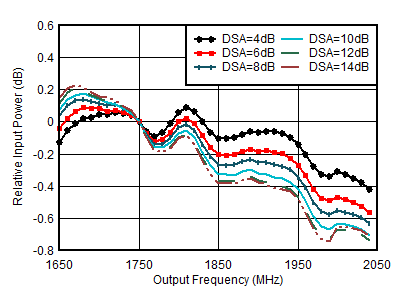
| With 1.8GHz matching, normalized to
1.75GHz |
|
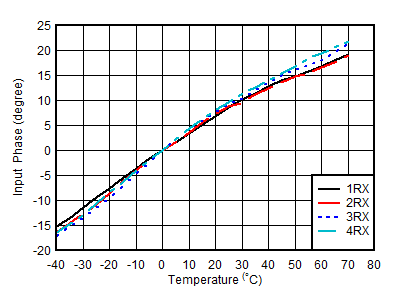
| With 2.6GHz matching, normalized to phase at 25°C |
|
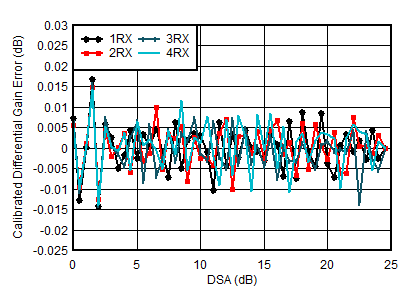
| With 1.8GHz matching |
| Differential Amplitude Error = PIN(DSA Setting – 1) – PIN(DSA Setting) + 1 |

| With 1.8GHz matching |
| Integrated Amplitude Error = PIN(DSA Setting) – PIN(DSA Setting = 0) + (DSA Setting) |
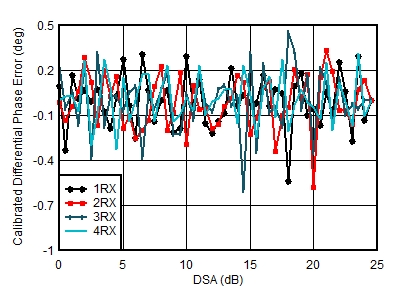
| With 1.8GHz matching |
| Differential Phase Error = PhaseIN(DSA Setting – 1) – PhaseIN(DSA Setting) |
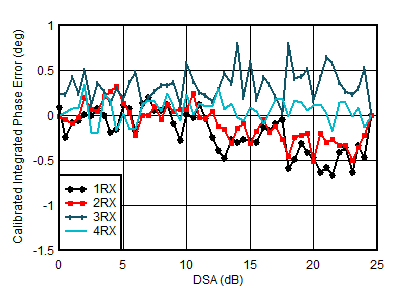
| With 1.8GHz matching |
| Integrated Phase Error = Phase(DSA Setting) – Phase(DSA Setting = 0) |
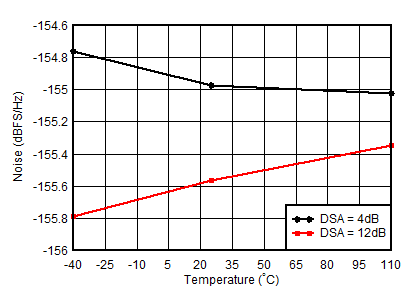
| With 1.8GHz matching, 12.5MHz offset from
tone |
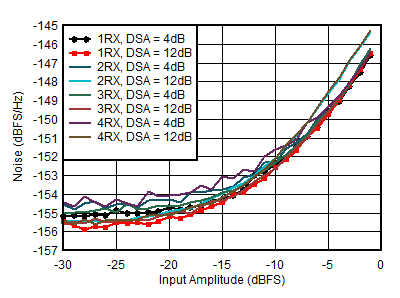
| With 1.8GHz matching, 12.5MHz offset from
tone |
|
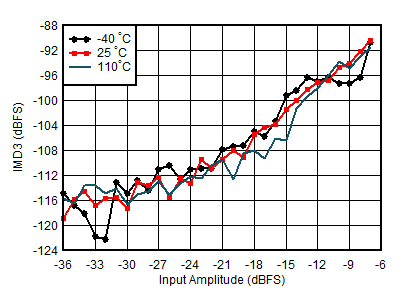
| With 1.8GHz matching, tone spacing = 20MHz,
DSA = 4dB |
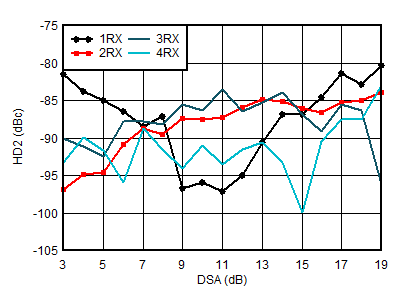
| With 1.8GHz matching, fin =
1900MHz, measured after HD2 trim, DDC bypass mode (TI
only mode for characterization) |
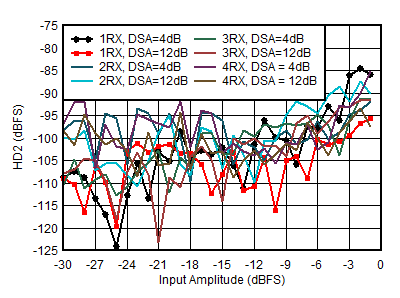
| With 1.8GHz matching, fin =
1900MHz, measured after HD2 trim, DDC bypass mode (TI
only mode for characterization) |

| With 1.8GHz matching, fin =
1900MHz, DDC bypass mode (TI only mode for
characterization) |
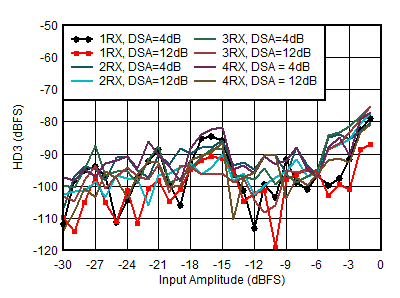
| With 1.8GHz matching, fin =
1900MHz, DDC bypass mode (TI only mode for
characterization) |
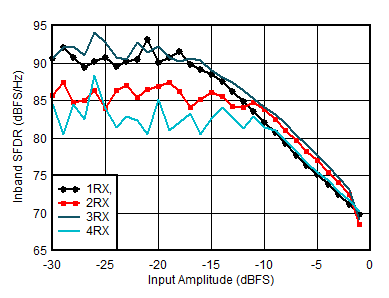
| With 1.8GHz matching, decimated by 3 |

| With 1.8GHz matching, –7dBFS each tone, 20MHz
tone spacing, all supplies at MIN, TYP, or MAX
recommended operating voltages |
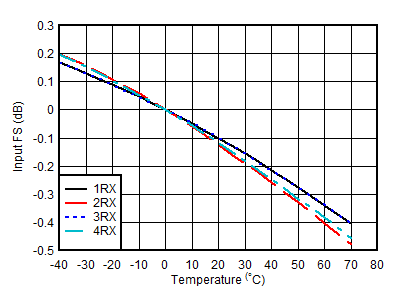
| With 1.8GHz matching, normalized to fullscale
at 25°C for each channel |
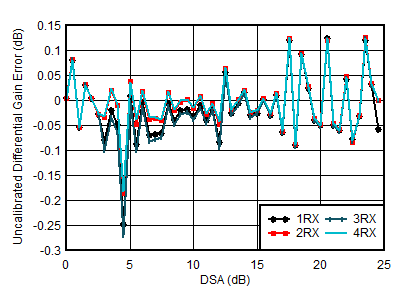
| With 1.8GHz matching |
| Differential Amplitude Error = PIN(DSA Setting – 1) – PIN(DSA Setting) + 1 |

| With 1.8GHz matching |
| Integrated Amplitude Error = PIN(DSA Setting) – PIN(DSA Setting = 0) + (DSA Setting) |
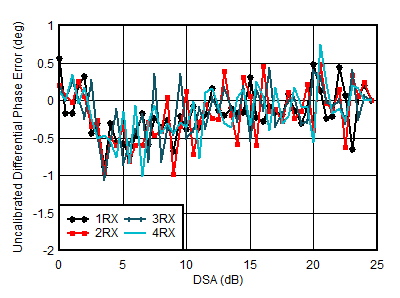
| With 1.8GHz matching |
| Differential Phase Error = PhaseIN(DSA Setting – 1) – PhaseIN(DSA Setting) |
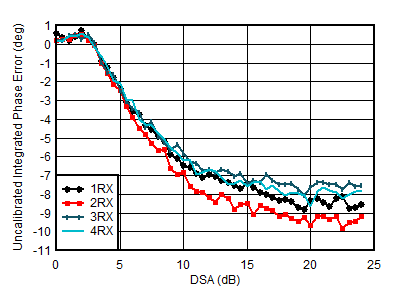
| With 1.8GHz matching |
| Integrated Phase Error = Phase(DSA Setting) – Phase(DSA Setting = 0) |
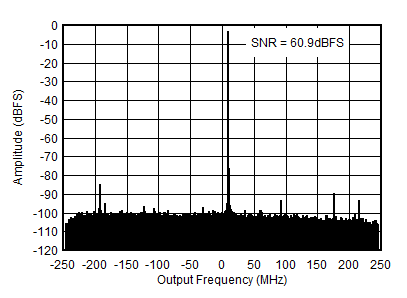
| With 1.8GHz matching, fIN =
2610MHz, AIN = –3dBFS |
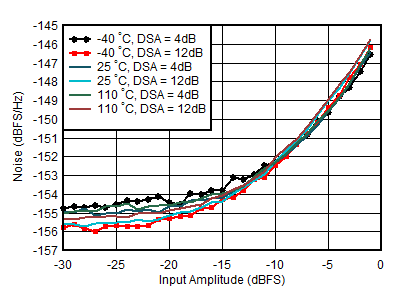
| With 1.8GHz matching, DSA Setting = 12dB,
12.5MHz offset from tone |
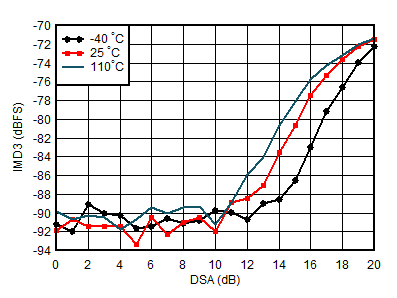
| With 1.8GHz matching, each tone –7dBFS, tone
spacing = 20MHz |

| With 1.8GHz matching, tone spacing = 20MHz,
DSA = 12dB |
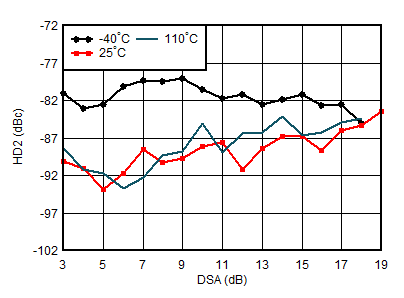
| With 1.8GHz matching, fin =
1900MHz, measured after HD2 trim, DDC bypass mode (TI
only mode for characterization) |
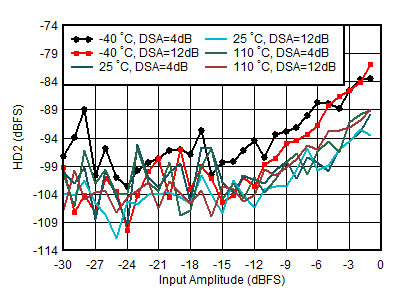
| With 1.8GHz matching, fin =
1900MHz, measured after HD2 trim, DDC bypass mode (TI
only mode for characterization) |
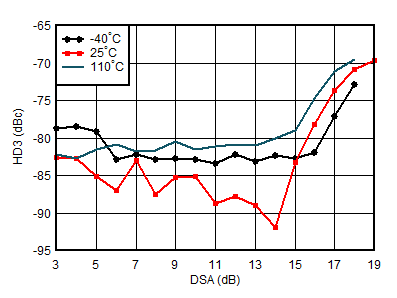
| With 1.8GHz matching, fin =
1900MHz, DDC bypass mode (TI only mode for
characterization) |
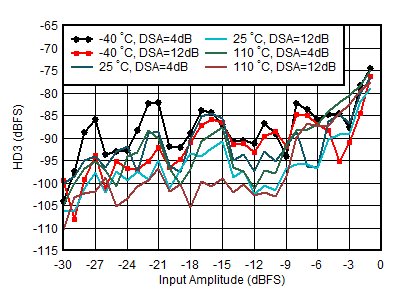
| With 1.8GHz matching, fin =
1900MHz, DDC bypass mode (TI only mode for
characterization) |
 Figure 4-343 RX Non-HD2/3 vs DSA
Setting at 1.75GHz
Figure 4-343 RX Non-HD2/3 vs DSA
Setting at 1.75GHz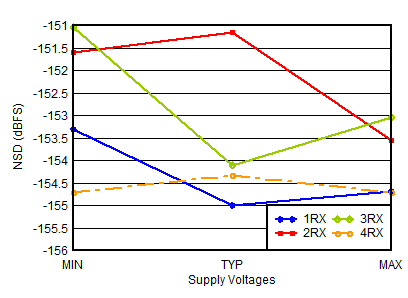
| With 1.8GHz matching, 12.5MHz offset, all
supplies at MIN, TYP, or MAX recommended operating
voltages |





























